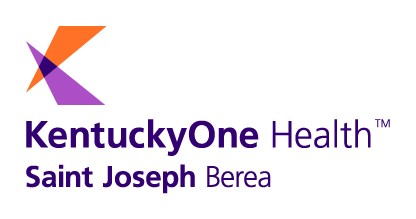KentuckyOne Health Encouraging Sports Safety During Football Season - Archived

For More Information:
David McArthur, Senior Manager, Media Relations
502.562.7016 or 502.648.3411
[email protected]
KentuckyOne Health Encouraging Sports Safety During Football Season
Knee injuries top the list for football injuries
Berea, Ky. (August 25, 2017) – As students head back to school, many will become involved in organized athletics like football, a high-impact sport that has a high risk for injury. Football is the leading cause of school sports injuries, sending more than 466,000 students to hospital emergency rooms in 2012, according to the U.S. Consumer Product Safety Commission. That’s why Saint Joseph Berea, part of KentuckyOne Health, is encouraging parents and young people to educate themselves on ways to prevent football injuries.
“Football injuries typically occur to the knee, shoulder, head or as a result of heat,” said Derrick Williams, DO, KentuckyOne Health Primary Care Associates. “Some injuries can be prevented by taking the proper precautions before hitting the field, like warming up and stretching.”
Knee Injuries
The top injuries football players encounter are knee injuries, typically an anterior cruciate ligament (ACL) injury and medial collateral ligament (MCL) injury. The ACL runs along the middle of the knee and keeps the shin bone from sliding in front of the thigh bone, while the MCL runs along the middle of the knee and prevents the knee from bending inward. These injuries may occur after a tackle and can range from mild to severe. To diagnose an ACL or MCL injury, a physician may order an X-ray or MRI.
While some patients may only require physical therapy and rehabilitation to return to play, reconstructive surgery is often necessary for those suffering from an ACL injury or combined injuries. With an MCL injury, surgery isn’t required often, though patients must wear a lightweight brace or cast during their recovery.
Shoulder Injuries
Shoulder injuries are also common in football. Frequently throwing a football or being hit in the shoulder by another player can result in shoulder tendonitis or shoulder dislocation. Treatment for shoulder tendonitis typically includes a combination of rest, wearing a shoulder sling and the use of ice packs, but surgery will be required if the tendon has been partially or completely torn.
For a dislocated shoulder – when the upper arm bone pops out of the socket – the athlete should seek medical help right away. It’s important to apply ice to the shoulder to reduce pain and swelling. The physician will order an X-ray to examine the shoulder joint before treating the injury. Treatment may include gentle maneuvers to help the shoulder bone back into place, surgery, wearing a splint or sling, medication and rehabilitation.
Concussions
Although football players wear helmets on the field, concussions are a concern when athletes take a hit to the head. Concussions can have long-term health effects, changing how the brain normally functions. An estimated 1.6 to 3.8 million concussions occur each year, according to the Brain Injury Research Institute. An athlete suffering from a concussion may experience headache, dizziness, blurry vision, nausea or vomiting, and confusion. Any player exhibiting these symptoms should be immediately checked by a medical professional before being allowed to return to the game or practice.
Heat-Related Injuries
Heat exhaustion can also pose health challenges to football players, with practice often occurring in high heat at the end of summer. It’s important for players to stay hydrated during practice to help reduce the chances for heat exhaustion or heat stroke, which in severe cases, can even result in death.
Symptoms of heat exhaustion include nausea and vomiting, dizziness, muscle cramps, headache, weakness, fatigue, clammy skin, shallow breathing, flushed face, and rapid heartbeat which may be strong or weak. A person suffering from a heat stroke may exhibit similar symptoms, as well as a core body temperature about 104 degrees Fahrenheit, seizures or unconsciousness.
“If you suspect someone has heat stroke or heat exhaustion, it’s important to call 911 immediately and move the person to a cool environment,” said Dr. Williams. “Gently misting the skin with cool water will also help cool the person’s body while waiting for help to arrive.”
Athletes can help prevent injuries by taking precautions before hitting the field. It’s critical to do warmup exercises and stretch before playing sports, wear shoes that fit properly and absorb shock, run on flat surfaces, cool down before and after a game or workout, land with your knees bent when jumping, avoid bending your knee more than halfway when doing knee bends, and avoid twisting your knees when you stretch.
If injured during a game, it’s important to contact your physician to ensure you receive the proper treatment. If you are dealing with a life-threatening emergency, call 911. For non-emergency injuries, visit http://chooseyourdoor.org or call 888.570.8091 to find a provider near you.
About Saint Joseph Berea
Saint Joseph Berea, part of KentuckyOne Health, is a 25-bed critical access hospital located in Berea, KY. It serves the residents of Madison, Estill, Garrard, Jackson and Rockcastle counties. Established in 1898, on the grounds of Berea College, Saint Joseph Berea recognizes the importance of family, friends and familiar surroundings in the healing process and provides a breadth of services so that getting first-rate care doesn’t have to mean being far from home.
About KentuckyOne Health
KentuckyOne Health, one of the largest and most comprehensive health systems in the Commonwealth, includes hospitals, physician groups, clinics, primary care centers, specialty institutes and home health agencies in Kentucky and southern Indiana. KentuckyOne Health is dedicated to bringing wellness, healing and hope to all, including the underserved.
###
Publish date:
Friday, August 25, 2017